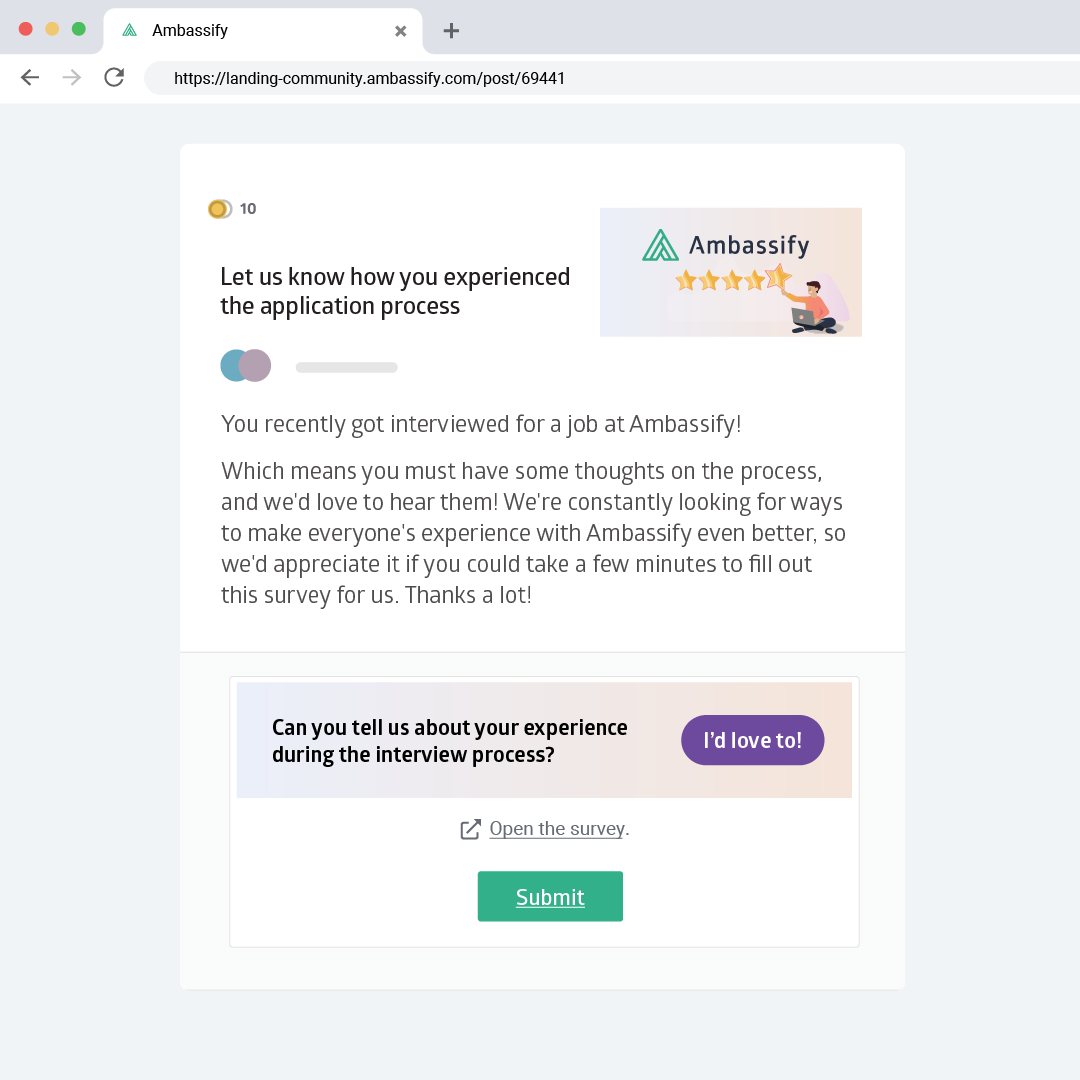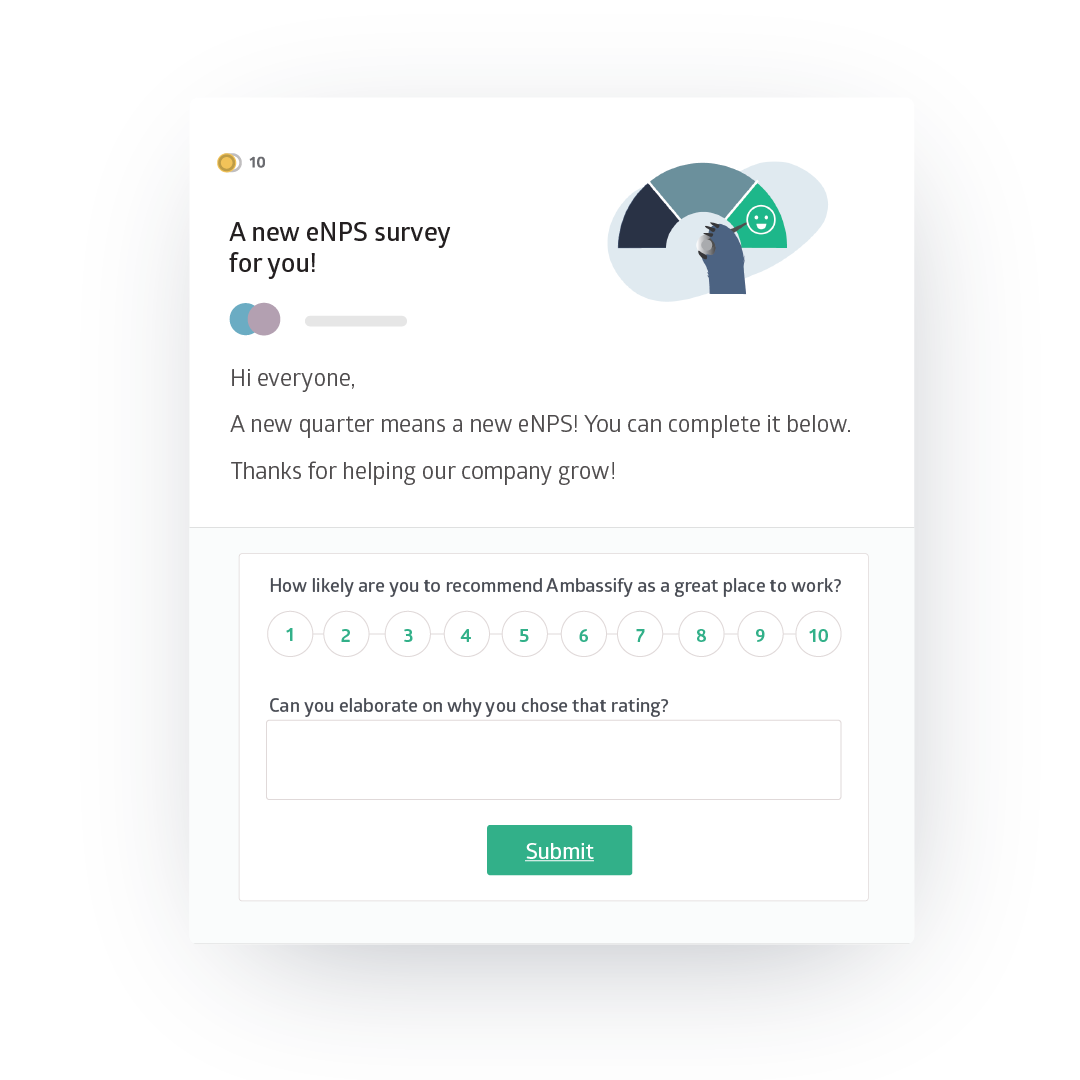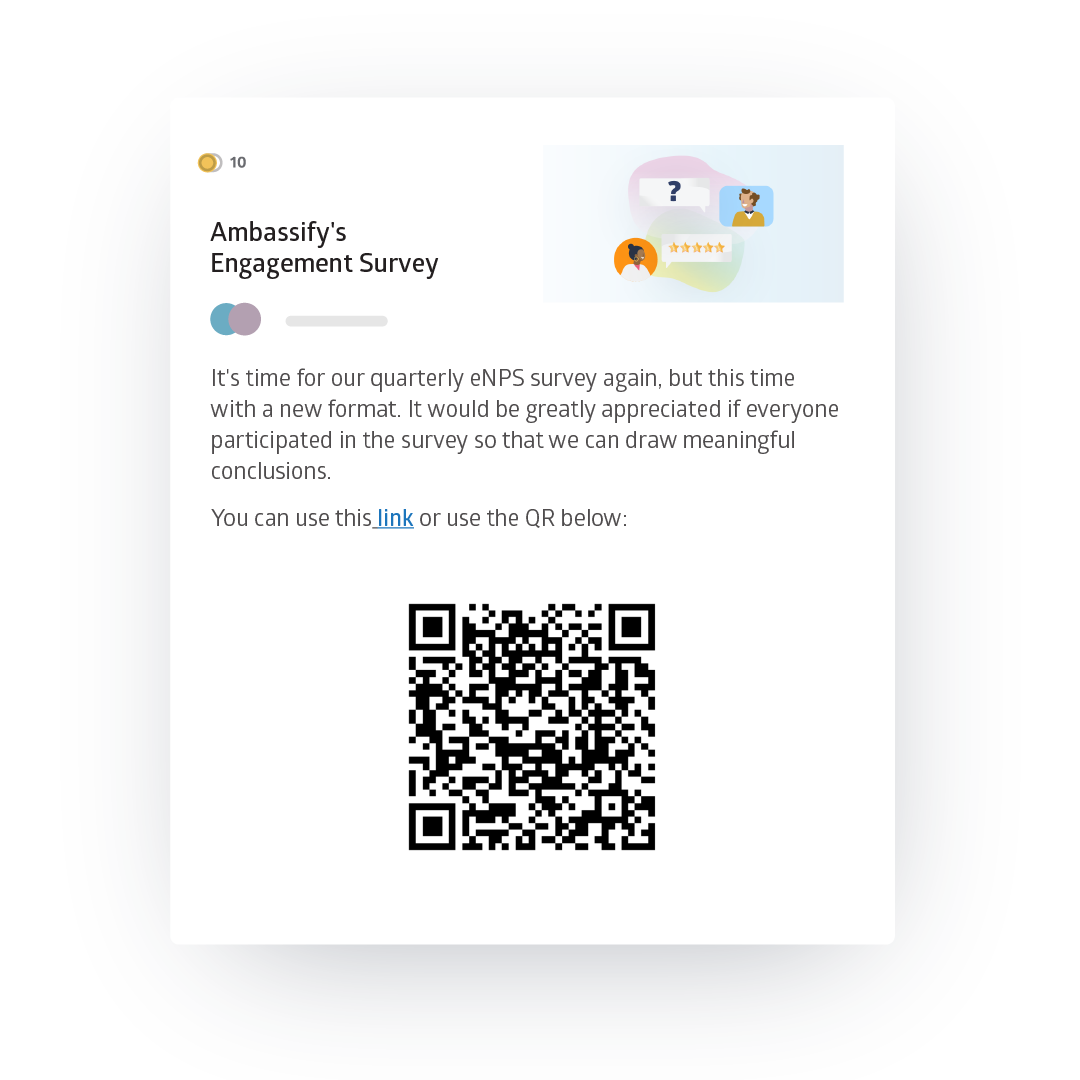Enhance your listening strategy to grow trust inside your organization

People co-create in marketing all the time. So why not co-create your employee lifecycle, one of your most important products? In this article, we explain how to enhance your listening strategy to co-create your employee lifecycle and grow trust in your company.

People co-create in marketing all the time. Why? Because it widens your innovation process by including a wide range of voices that normally would not be involved. It makes you see and understand points of view that you normally wouldn’t think about yourself. And, of course, you have a wider reach on social media, too.
According to this report, even 61 percent of respondents say that co-creation has enabled them to produce more successful new products and services.
So why not co-create your employee lifecycle, one of your most important products? An Employee Lifecycle consists of many touch points, which many HR enthusiasts are familiar with. Just for clarity, the lifecycle consists of 6 stages:
- Attraction - your Employer Brand
- Recruitment - Candidate Experience
- Onboarding - The welcome to the team
- Retention - the rewarding & acknowledgment of employees
- Career Development - Learning & Development
- Offboarding - When you part ways
Every stage is equally important, as they impact employees in different ways. But are you already implementing the power of co-creation?
This blog article will explain how you can.
Co-creating your employee lifecycle boils down to having a great listening strategy. Because how can you co-create if you don’t listen and implement? The latter is equally important as the former. We often see companies listen to their employees but then afterward not act upon the feedback they receive.
Creating different touch points by which you can gather feedback makes it easier to monitor it over time. Especially in a hybrid environment where conversations happen less organically, it’s important to think about a structure that supports constructive feedback.
Which touchpoints should you implement? Let’s break it down per stage.
Stage 1: Attraction
When thinking about your Employer Brand, it is important to start from within so the image you reflect outward also is a true representation of how your employees perceive you. We've created an article on how you can make an impact with your Employer Brand and thus create a great first stage of this cycle.
Stage 2: Candidate Experience
You should design this stage in such a way that you also close the loop. After a candidate has gone through your entire application process, you should ask for feedback.
We use a landing page in Ambassify to gather feedback. This is via our integration with Typeform.
 Ask questions so you understand better how they experienced the process. Examples are:
Ask questions so you understand better how they experienced the process. Examples are:
- How did you find out about our vacancy? This helps you identify your top channels over time
- Overall, how would you rate your experience during the interview process? This gives you a better understanding of your overall score
Besides these more generic questions, it’s important to also have some key focus topics:
- Focus on the vacancy and whether or not it was clear:
- The vacancy was clear [rating]
- The vacancy stood out from others [rating]
- Ask questions regarding the quality of the interview:
- Did it start on time? [Yes/No]
- The recruiter took time to listen to my questions [rating]
- The recruiter treated me with courtesy and respect [rating]
- The interview process was … [add different qualities]
- Ask if they would recommend Ambassify to others [Yes/No]
- Ask for improvements that you could undertake for your recruitment process [Open question]
Stage 3: Onboarding
Once a new team member has reached their 1 month anniversary, we send our onboarding satisfaction survey to them. During their first month at Ambassify, they have already had various 1-on-1s and check-ins.
Since working in a hybrid environment, we have converted the normally physical check-ins to structured digital meet-ups. However, we’ve noticed that employees tend to be even more open when answering questions in a survey.
The questions you ask here can revolve around the following topics:
- Their early experience
- The team did its best to make me feel welcome on my first day [rating]
- The Operations team (or whichever team is responsible for the onboarding in your company) was available for questions before my start date [rating]
- I was given a clear understanding of the onboarding process in advance [rating]
- My manager was available before my start date [rating]
- Their first day
- Everything was ready for my first day [rating]
- Completing the onboarding process was easy [rating]
- It was clear where I had to go and what I had to do [rating]
- There was an easy start to my job [rating]
- Your company
- The mission, vision & values are clear to me [rating]
- I understand the company policies [rating]
- The manager
- Was there sufficient direction? [rating]
- Was the manager available for them to ask questions? [rating]
- Engagement levels
- I feel welcome here [rating]
- I feel productive [rating]
- I am glad I started this job [rating]
These topics will make clear if they are engaged and have had enough support. If the outcome feels worrying, it’s best to schedule a 1-on-1 with them so you can better understand the reasons behind their answers. The earlier you discover potential issues in a working relationship, the shorter they will stay.
Stage 4: Retainment
This stage can often be missed when people are thinking about their listening strategy. However, this is a very valuable stage to monitor.
How?

A classic tool here is the eNPS. The Employee Net Promoter Score is designed to help companies measure employee loyalty & satisfaction. It’s a short survey that asks one main question:
How likely are you to recommend our company as a great place to work?
We like to add a second question, which is optional to answer, where we ask if they wish to elaborate on their scoring. We track it every quarter, which helps us gain good insights into how it evolves over time.
PS: Communicating the score afterward is also important.
A second option we like to implement is a more elaborate engagement survey. We like to switch one short eNPS per quarter with one engagement survey.
This looks like the following:
- Q1: eNPS
- Q2: Engagement survey [including an eNPS]
- Q3: eNPS
- Q4: eNPS

During the engagement survey, we like to focus on different topics that resonate with you as a company. Besides company-specific questions you can ask, we also always implement questions regarding:
- Fit & Belonging
- Self-efficacy
- Office culture
- Management satisfaction
- Engagement level (this part includes the eNPS)
Besides engagement levels, how psychologically safe your team feels is also important to monitor. Once you get an overview of the responses, it’s important to share these with the team lead. They can then discuss it with the team in a more private setting.
Stage 5: Career Development
This is the stage in which, even though we’re a hybrid company, we prefer to have face-to-face conversations. For Career Development, we have different touch points.
We wish to always gather feedback once an employee has fulfilled a training. This is asked in person. Questions you can ask:
- Was the training according to your expectations?
- Is there any feedback you wish to give regarding our process?
- ….
We also always ask employees to share their top learning in our digital knowledge hub, so other employees can read the information as well.
A satisfaction survey regarding your career development programs is also a good idea!
Stage 6: Offboarding
Saying goodbye to a company (from an employee’s point of view) and to a colleague (from the company’s) is a normal and natural thing. When done right, it can even be a beautiful thing.
You should handle your offboarding in the same delicate manner you handle your onboarding. Employees leaving your company should remain ambassadors. Some companies even have an alumni program to maintain a strong bond between old employees.
As far as the listening strategy goes, it’s important to also implement it here. Even though you have exit interviews, in these more delicate matters, employees or ex-employees are more inclined to tell more detail in surveys. When an Ambassify employee leaves our team, we always ask them to complete the exit survey on their final day.
Questions you can ask:
- Was the role accurately described to me before I joined X
- My contribution to the team & goals was clear
- What are some things we’re doing really great here?
- What are some things we could improve on?
- I looked forward to logging in to work each day
- I feel like I belong here
- I got enough opportunity to develop on a personal level
- I received the right amount of recognition for my work
- Overall, I was satisfied with the company’s total rewards pack
- I would still recommend this company as a great place to work
- My manager communicated clearly
We suggest adding an open question after all the proposed questions in which the exiting employee can leave more context to their previously given response. This makes the feedback you receive more actionable.
Are you ready to make People Operations something that really makes the desired impact for your employees? Implementing a great listening strategy is a good start.